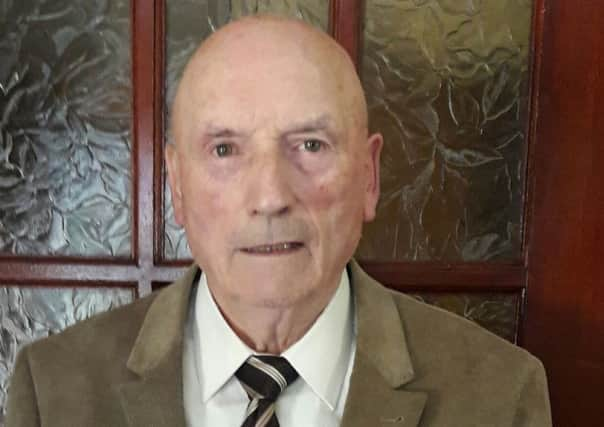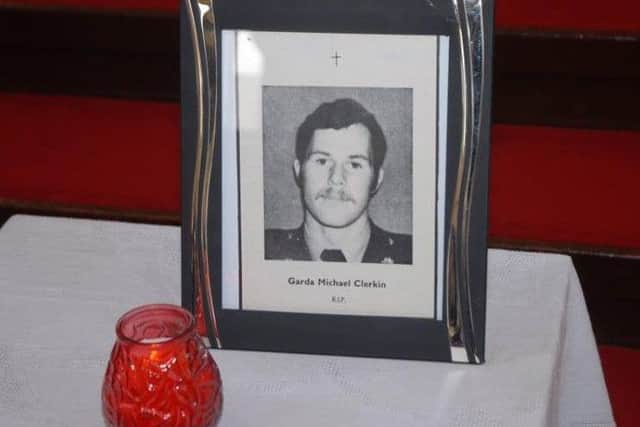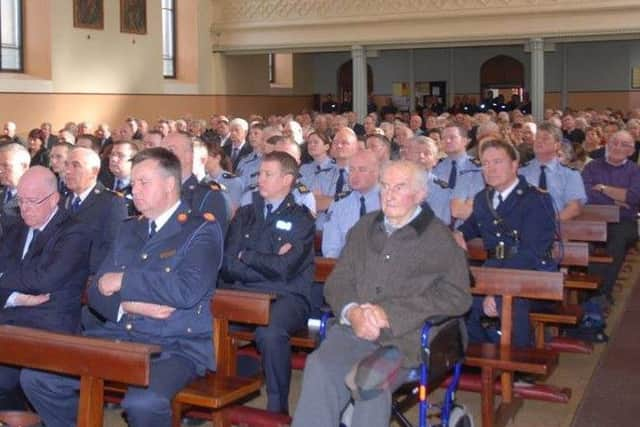Buried alive: Garda remembers 'miracle' escape from fatal IRA bomb


Retired Irish police sergeant Jim Cannon has spoken out in detail about his recollections of the attack which almost claimed his life, and about the need to remember such atrocities – likening Sinn Fein’s support to the “peculiar” decision of many Americans to back Donald Trump despite of his behaviour.
The booby-trap bombing on October 16, 1976 in Portarlington (a village in the centre of the Republic) killed 24-year-old officer Michael Clerkin, who hailed from Monaghan town, a few miles across the border from Northern Ireland.
Advertisement
Hide AdAdvertisement
Hide AdA memorial service was held at St Michael’s church in Portarlington on Saturday – the day before the anniversary – and Mr Cannon said that such gatherings are vital to keep the young informed about the evils of the past.


The bombing was the day of Mr Cannon’s 42nd birthday.
Now an 82-year-old grandfather, still living in Portarlington, he continues to suffer from wounds to his legs.
At the time, he had been in charge of Portarlington Garda station.
A call had been made by an anonymous woman to nearby Portloaise Garda station at about 11.45pm on October 15, warning that a vacant house near Portarlington was being used by armed men who were planning to attack an Irish government minister.


Advertisement
Hide AdAdvertisement
Hide AdAt about 12.40am on October 16, Sgt Cannon and a team of four other policemen arrived at the two-storey farmhouse in a rural, forested area to the west of Portarlington.
Mr Cannon said it was in “total darkness – there wa sno sign of life”.
He recalled searching outside with torches and car lights, before Michael Clerkin entered the house through an open back window.
He then opened the front door to let other Garda inside.


Less than a minute later, “there was a tremendous explosion and the whole building blew up”.
Advertisement
Hide AdAdvertisement
Hide AdGarda Clerkin had stood on a landmine placed at the centre of the house, said Mr Cannon, detonating about 100lb (45kg) of explosives.
Mr Cannon himself had been outside by the back wall, and was buried up to his neck in rubble, along with another officer beside him called Gerry Bohan.
“Rocks and debris rained down on top of us,” said Mr Cannon.


“He [Gerry Bohan] was able to extracate himself after some minutes from the rubble.
Advertisement
Hide AdAdvertisement
Hide Ad“I was buried under about four to five feet of rubble. He wasn’t able to completely extracate me because my legs were trapped in the debris. “Having failed to get me out, he ran to a nearby house for assistance.
“He was very badly injured of course, to his head and back and hands and feet.”
After five minutes buried and in utter darkness, Mr Cannon managed to get out too.
“I heard moaning coming from under the rubble in the house. I rushed as quickly as I possibly could.”
Advertisement
Hide AdAdvertisement
Hide AdHe began clearing away rubble where he heard the moans, and saw “a terrible sight” – it was a “bloodied head, hardly recognisable, sticking up out of the mound of rubble”.
It was Detective Tom Peters. Still alive, he was left both blind and deaf by the blast.
Mr Cannon then heard moans inside the centre of a roughly 8ft high pile of wreckage. These turned out to be from Detective Ben Thornton.
In severe pain and with grit in his eyes, he could not reach the detective.
Advertisement
Hide AdAdvertisement
Hide AdThe radio had been destroyed, and he could not call for help.
He decided to run about a quarter of a mile across a number of fields to find the owners of the abandoned house.
“I moved in total darkness across the fields to their house. I had great difficulty in getting through a number of barbed wire fences which actually tore some of the flesh and clothing off me.
“My legs were bleeding heavily.”
When he arrived and rang the police station, he was “like a corpse, all white from the dust, and my uniform was in shreds – in fact my Garda cap was found hanging from a tree 100 feet away from the scene”.
Advertisement
Hide AdAdvertisement
Hide AdWhen he returned to the bombed house, local men had arrived and were digging through the rubble.
Peters and Thornton were under the rubble for an hour before being freed.
But Mr Cannon said: “There was no evidence at all of Garda Clerkin. He was blown to bits.”
He added: “People cannot believe that we survived... It was a miracle that I’m still around.”
Advertisement
Hide AdAdvertisement
Hide AdLooking back on it now, he said it was the same to him “as yesterday”.
“You can’t forget a thing like that,” he said.
Speaking of the memorial service at the weekend, which was “packed”, he said: “It think it’s always important. You must remember that anybody under 40 didn’t know about this.
“It’s no harm to bring this to the notice of those people as well to show them what happened to us on that night.”
Asked about Sinn Fein’s growing support in the Republic, he said: “Anybody under 40 wouldn’t have known the atrocities they carried out in that time.
Advertisement
Hide AdAdvertisement
Hide Ad“You look at the American election at the moment – people are peculiar you know, the way they vote.”
Asked if he was referring to the support Trump has retained, he said: “Yeah. I mean when you see the antics of that gentleman, the same way here like with Sinn Fein.
“You know, the younger people will vote for those type of people ... People of my generation took a lot more interest in politics and that type of thing.”
He believes the attack was due to the fact that an Emergency Powers Bill, allowing Garda to detain suspects for up to seven days instead of 48 hours, he just been passed.
Advertisement
Hide AdAdvertisement
Hide AdThe book Lost Lives notes that Provisional Sinn Fein (the PIRA’s political wing) initially denied the group was responsible.
Mr Cannon has “no doubt” the IRA was responsible, adding: “They denied it, but then they deny everything.”
He said that two suspects – one was questioned and released, then later arrested again, and this second arrest was declared unlawful; the second suspect, he believes, left for America.
No-one has ever been convicted in relation to the bombing.